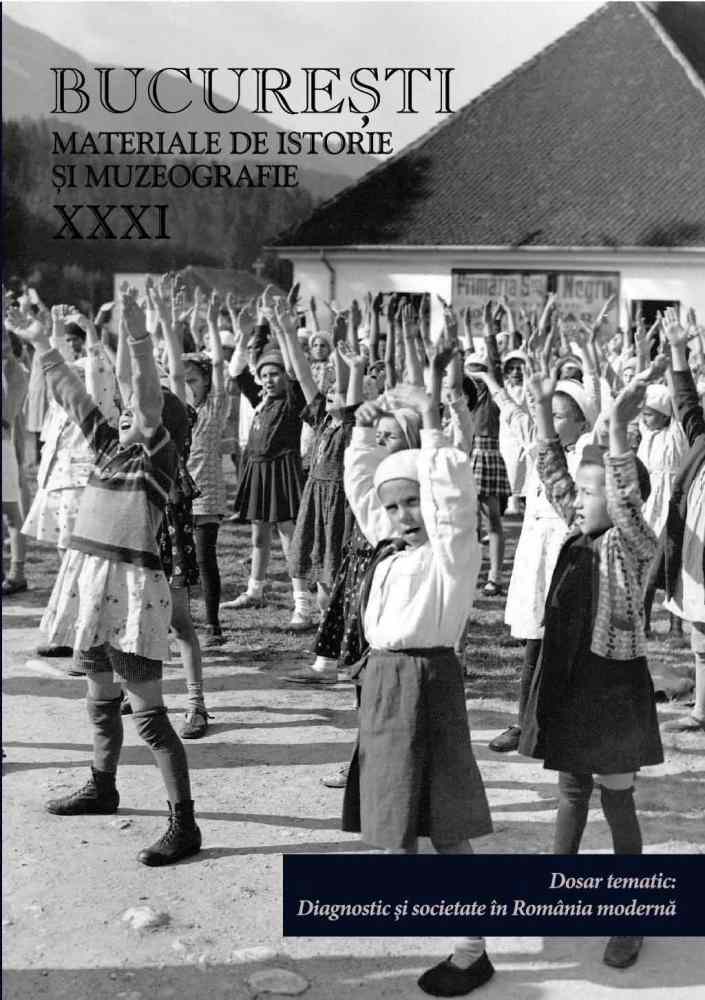
Curtea domnească din Bucureşti: întemeiere, evoluţie şi decădere
| Autori |
|
| Secţiunea |
|
| Limba de redactare | română |
| TITLU în română | The territory on which the Bucharest Princely Court was built is in fact an older cradle of civilisation, dating as far as the neolithic age. Silex chips and blades were uncovered from this time, as well as tools made of bone, or rudimentary articles of pottery. Archaeological research begun in 1967 uncovered remains of the first construction built on the land later occupied by the Princely Court. They point to the existence of a foursides fortified city, covering 160 square meters. Made of brick, the fortress had its corners strengthened with stone blocks, and a two meter wide ditch surrounded its walls. Because the entire surface had been covered in 16th and 17th century buildings, we can no longer be sure what the upper half of the fortification walls looked like. In the last decades of the 14th century, Bucharest benefitted from a fortified point, that had ensured protection for passing trade caravans. Built in the second half of the 14th century, the fortress bordering the Dâmboviţa River concluded its existence in the first part of the 15th century. The second construction, built between 1456-1462 on the same spot as the first fortress, was a fortified settlement belonging to Vlad the Impaler. Inheriting a residence that no longer met 16th century standards and necessities, Mircea the Shepherd took radical measures regarding the reconstruction of the Princely Court, and built a Voivodal Palace. The period of maximum flourishing of the Princely court was recorded during Constantin Brâncoveanu’s time. Both the palace and the surrounding buildings here remade, repaired, using bricks, marble, stone. Inside, the walls were covered with frescoes, and the hall sand corridors were adorned with silk curtains and Oriental carpets. Candelabra coming from the Occident ensured the light. After Constantin Brâncoveanu’s reign, the Princely Court entered an irreversible process of decay, because the maintenance of the building was not properly ensured, because of the delayed and improper repairing. After more than half a century from Constantin Brâncoveanu’s tragical death, the palace was no more fit for inhabiting. In 1775, ruler Alexandru Ipsilanti asked for an estimation cost of the repairings but, when realizing that 300 pouches of gold were necessary, he abandoned the idea, and had another house built for himself instead, on the Dealul Spirii. The new building was called The New Court while the other was, obviously named The Old Court. The history of this place came to an end during the 18th century, when ruler Constantin Hangerli put the place to auction, as he needed money to maintain the new court on the Dealul Spirii. The whole surface – with the exception of the Church ground – was divided into lots, and sold in two stages, to boyars and merchants. |
| Excerpt | The territory on which the Bucharest Princely Court was built is in fact an older cradle of civilisation, dating as far as the neolithic age. Silex chips and blades were uncovered from this time, as well as tools made of bone, or rudimentary articles of pottery. Archaeological research begun in 1967 uncovered remains of the first construction built on the land later occupied by the Princely Court. They point to the existence of a foursides fortified city, covering 160 square meters. Made of brick, the fortress had its corners strengthened with stone blocks, and a two meter wide ditch surrounded its walls. Because the entire surface had been covered in 16th and 17th century buildings, we can no longer be sure what the upper half of the fortification walls looked like. In the last decades of the 14th century, Bucharest benefitted from a fortified point, that had ensured protection for passing trade caravans. Built in the second half of the 14th century, the fortress bordering the Dâmboviţa River concluded its existence in the first part of the 15th century. The second construction, built between 1456-1462 on the same spot as the first fortress, was a fortified settlement belonging to Vlad the Impaler. Inheriting a residence that no longer met 16th century standards and necessities, Mircea the Shepherd took radical measures regarding the reconstruction of the Princely Court, and built a Voivodal Palace. The period of maximum flourishing of the Princely court was recorded during Constantin Brâncoveanu’s time. Both the palace and the surrounding buildings here remade, repaired, using bricks, marble, stone. Inside, the walls were covered with frescoes, and the halls and corridors were adorned with silk curtains and Oriental carpets. Candelabra coming from the Occident ensured the light. After Constantin Brâncoveanu’s reign, the Princely Court entered an irreversible process of decay, because the maintenance of the building was not properly ensured, because of the delayed and improper repairing. After more than half a century from Constantin Brâncoveanu’s tragical death, the palace was no more fit for inhabiting. In 1775, ruler Alexandru Ipsilanti asked for an estimation cost of the repairings but, when realizing that 300 pouches of gold were necessary, he abandoned the idea, and had another house built for himself instead, on the Dealul Spirii. The new building was called The New Court while the other was, obviously named The Old Court. The history of this place came to an end during the 18th century, when ruler Constantin Hangerli put the place to auction, as he needed money to maintain the new court on the Dealul Spirii. The whole surface – with the exception of the Church ground – was divided into lots, and sold in two stages, to boyars and merchants. |
| Paginaţia | |< << 102-111 >> >| |
| Descarcă fişierul | |
| Titlul volumului de apariție | |
| Editura | Publicat de: Muzeul Municipiului Bucureşti |
| Loc publicare | Bucureşti |




